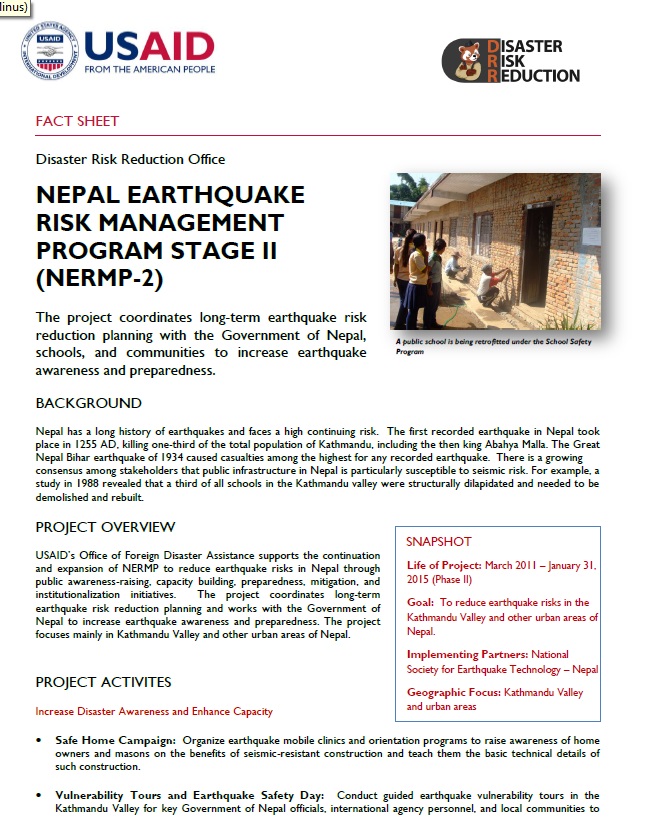BACKGROUND
Nepal has a long history of earthquakes and faces a high continuing risk. The first recorded earthquake in Nepal took place in 1255 AD, killing one-third of the total population of Kathmandu, including the then king Abahya Malla. The Great Nepal Bihar earthquake of 1934 caused casualties among the highest for any recorded earthquake. There is a growing
consensus among stakeholders that public infrastructure in Nepal is particularly susceptible to seismic risk. For example, a study in 1988 revealed that a third of all schools in the Kathmandu valley were structurally dilapidated and needed to be demolished and rebuilt.
PROJECT OVERVIEW
USAID’s Office of Foreign Disaster Assistance supports the continuation and expansion of NERMP to reduce earthquake risks in Nepal through public awareness-raising, capacity building, preparedness, mitigation, and institutionalization initiatives. The project coordinates long-term earthquake risk reduction planning and works with the Government of Nepal to increase earthquake awareness and preparedness. The project focuses mainly in Kathmandu Valley and other urban areas of Nepal.
Download the factsheet(pdf) to learn more.








Comment
Make a general inquiry or suggest an improvement.